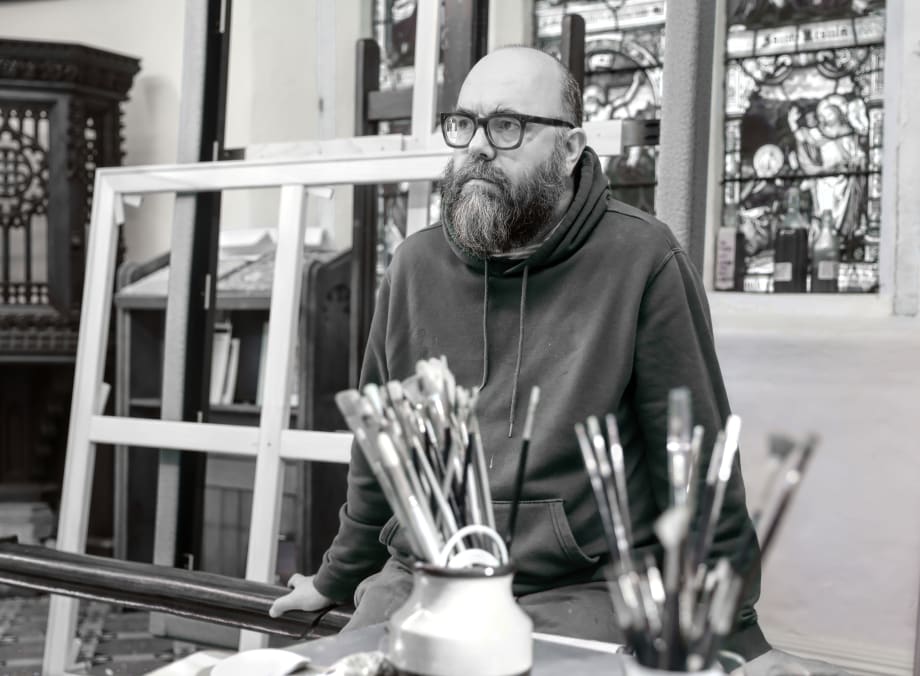I am currently working on a body of work which celebrates the energy and dynamism of the modern city. These paintings explore a combination of interior, exterior and reflected space. They are not documents of a specific location or particular time, but propose a new painted reality.
Each work begins (and sometimes ends), as a fluid architectural drawing. I employ perspective not as a preordained system but more as a strategy for constructing a new independent space. I create laws for this space which manipulate the world around us until something new evolves.
This approach to picture making is very different from holding up a mirror to our own world and duplicating what we see. I would argue that it is closer in spirit to the modernist painters of the early twentieth century. However, instead of a fractured reality I propose a coherent and convincing alternative.
These are paintings which are complex and multi-faceted in nature, they speak of the experience of being within the urban landscape.
The modus operandi of Nathan Walsh is extremely methodical and meticulous. The artist always begins his work with a physical survey of the subjects that he intends to depict, which are described in detail through photos and sketches. However, Walsh prefers to carry out his research through drawings, so to free himself from any dependency on photographic source material. It can take Walsh up to a year to complete his large paintings, the first phases of his work are therefore decisive in allowing the artist to explore the composition. He uses perspective to construct a model of three dimensional space. However this is a space that can be manipulated at will by the artist, each pictorial element being anchored to its own unique vanishing point. As the American critic Donald Kuspit observed, Walsh's bold use of perspective allows us to compare these paintings, which only at a fleeting glance could look hyperrealistic, to Piranesi's suite of engravings depicting imaginary prisons:
Initially elated by the glistening colour, brilliant handling, and visionary breadth of Walsh's paintings - by their ingenious fusion of urban geometry and painterly plenitude, I was suddenly reminded of Piranesi's gloomy prison prints, with their absurd spaces, violent darkness, torture chambers. There was no escape from them, just as there is no escape from Walsh's New York. Like Piranesi, Walsh has a taste for plunging tunnel-like perspective, cutting through the scene like a knife: streets that blindly rush into infinite space [...].
As the drawing evolves, shapes and details appear and disappear. It is therefore evident how this approach to painting is directly opposed to Photorealism, where an artist will mechanically transfer an image from photograph to canvas and then attempt to mimic the flatness of the original image. As the painting gradually takes shape and several layers of colour are applied to the linen canvas, the surface becomes more textured and varied. It is precisely this manipulation of paint that attracts Walsh: his aim is to make paintings which are both painterly and precise. The goal is not to mimic the flatness of photography but to go beyond the limits imposed by both the technical means and the rich tradition of European and American painting, so to make his own personal contribution to the development of a new artistic language.
